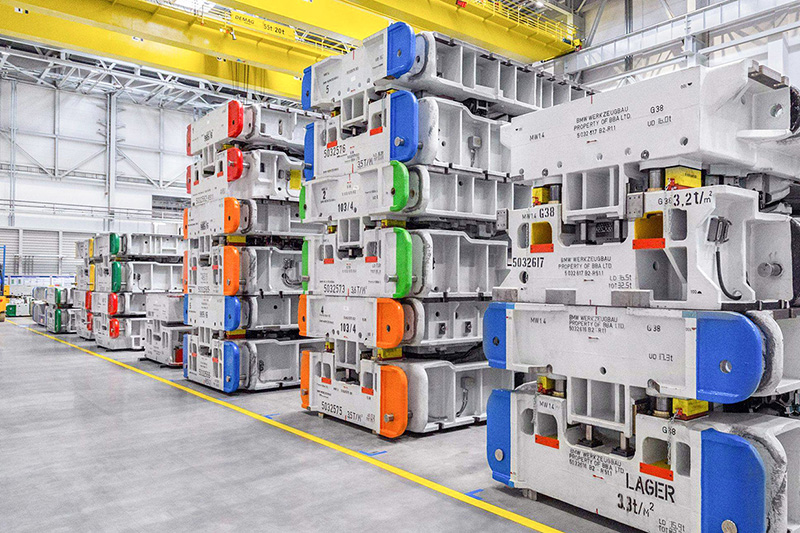1. What is the design principle of nitrogen gas spring?
The working process of the nitrogen gas spring using nitrogen as the working medium can be approximately regarded as an isothermal expansion and compression process, so it must follow the Boyle-Mariotte gas equation of state. PV/T=C, P1×V1=P2×V2
It should be noted that in addition to theoretical calculations, the structural design and sealing technology of the nitrogen cylinder are the key technologies for the success or failure of the nitrogen gas spring. Judging from the current domestic and foreign products, the structure of nitrogen gas springs can generally be divided into two types: piston type and plunger type, adopting a single-cavity or multiple-cavity air chamber structure, and most of the air chamber design is a back pressure structure. On the whole, nitrogen gas springs can be divided into two types: independent and non-independent. The structure of the movable part and the non-movable part, the design of inflation, gas distribution structure and form, etc. are all related to the manufacturing process technology, and related to the application of new materials, new processes, and new technologies. The degree of application of these new technologies is all It will directly affect the technical performance indicators of the nitrogen gas spring and the quality of the gas spring. In this sense, the nitrogen gas spring is a product that integrates the application of various new technologies.
The form and technology of gas sealing is a complicated task. The sealing of high-pressure gas is even more complicated. The high-pressure gas must not only be well sealed for a long time, but also work under this pressure. Sometimes its booster ratio is as high as 1.6-2.0, so the high pressure The long-term sealing of gas is much more difficult than the sealing of high-pressure liquids. It is a comprehensive technology. Among them are the sealing structure, the path and form of static and dynamic sealing, the manufacturing precision of movement, and the rough surface. Degree, surface treatment technology, selection of sealing materials, sealing reliability and life, etc.
2. The basic performance parameters of nitrogen gas springs?
Although the design of nitrogen gas springs hopes to broaden the application range, it can be suitable for various environmental conditions and different process requirements. However, the gas springs we recommend at present are generally used at room temperature. For high-temperature environments, it should Another matter. The operating environment is: the frequency response is not higher than 40 times per minute; the movement speed of the plunger or piston should be 30-40 m/min; the standby stroke is generally designed to be 3 mm; it can be used normally at room temperature. Under this condition, the performance parameters of the nitrogen gas spring can be determined as the following items:
(1) Inflation rated pressure bar
(2) Rated initial spring pressure in Newton?
(3) Effective working stroke mm
(4) One-time inflation life meter or times?
(5) Characteristic curve and boost ratio
(6) Working environment temperature in degrees Celsius?
(7) Appearance color
(8) Structure form and maximum eccentric load angle?
3. What are the characteristics of nitrogen gas springs?
The characteristics of nitrogen gas springs can be summarized as follows:
(1) In a small space, a large initial elastic pressure can be generated, without pre-tensioning, and the force transmission module has elastic pressure as soon as it comes into contact with the nitrogen spring plunger. One nitrogen spring can replace multiple springs. For molds with the same working stroke, the height of the mold using nitrogen springs is much smaller than that of springs;
(2) The elastic force can be kept basically constant throughout the entire stroke;
(3) According to different cold stamping process requirements, the size of the elastic force and the position of the stress point can be adjusted at any time, and the adjustment is accurate and convenient. In the mold design and debugging, it can easily achieve the balance of the elastic force;
(4) Simplify the mold pressure and discharge structure, simplify the mold design, and shorten the mold manufacturing cycle;
(5) Improve the quality of stamping parts, ensure the stable quality of stamped parts, shorten the time for mold replacement on the press, increase labor productivity, and reduce costs;
(6) Long service life, safety and reliability, simple, reliable and convenient installation and maintenance;
(7) Suitable for use as an air cushion device that does not require an external power source.







